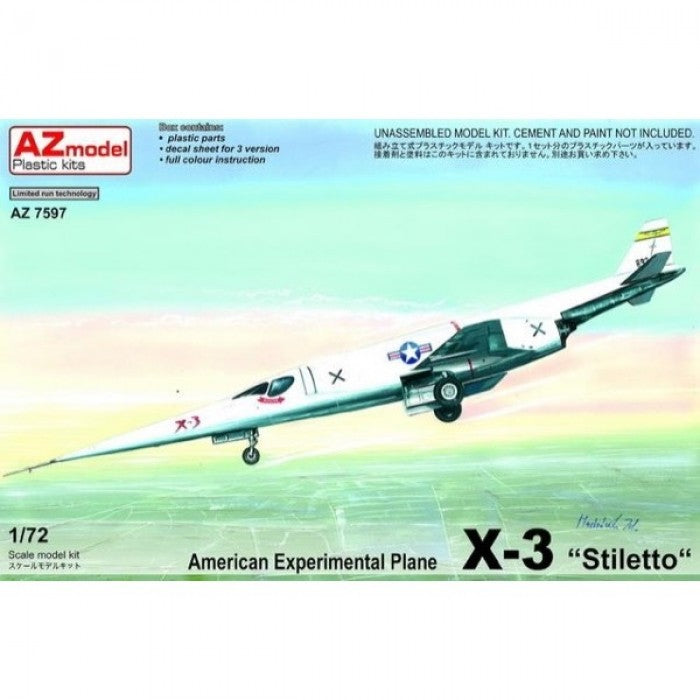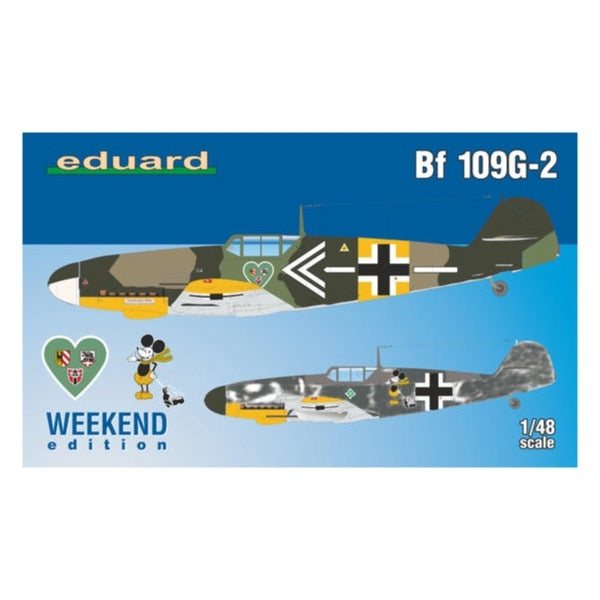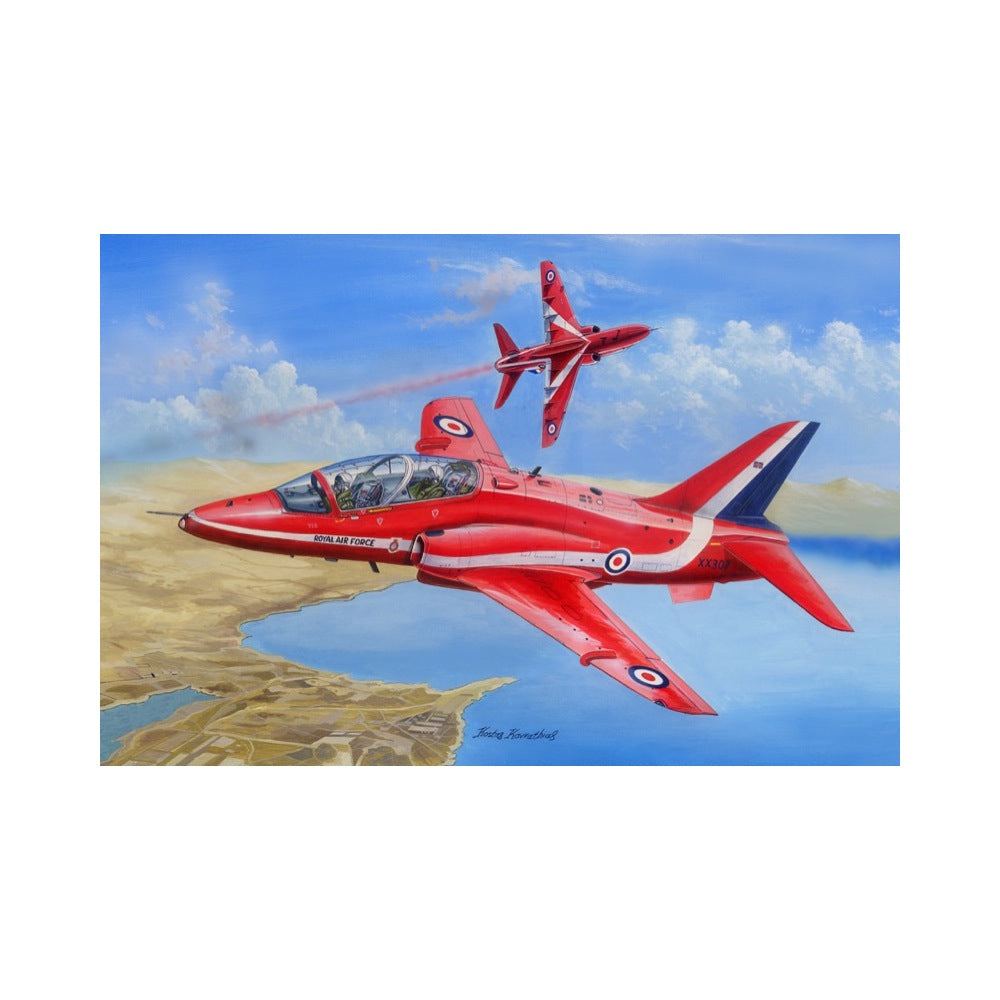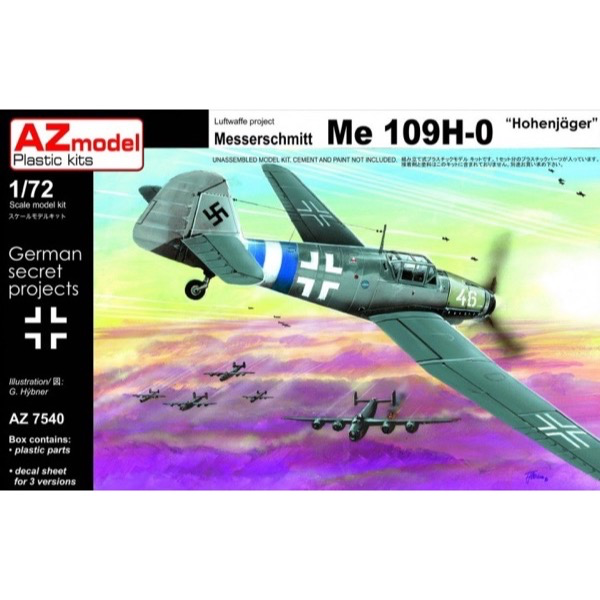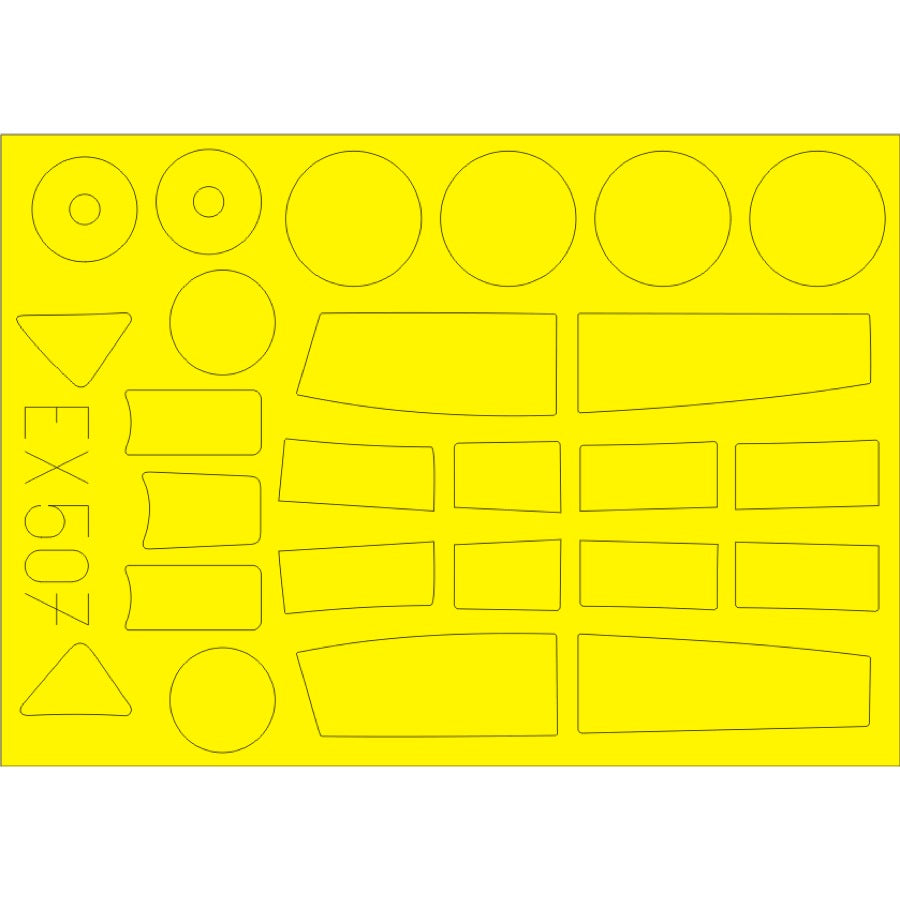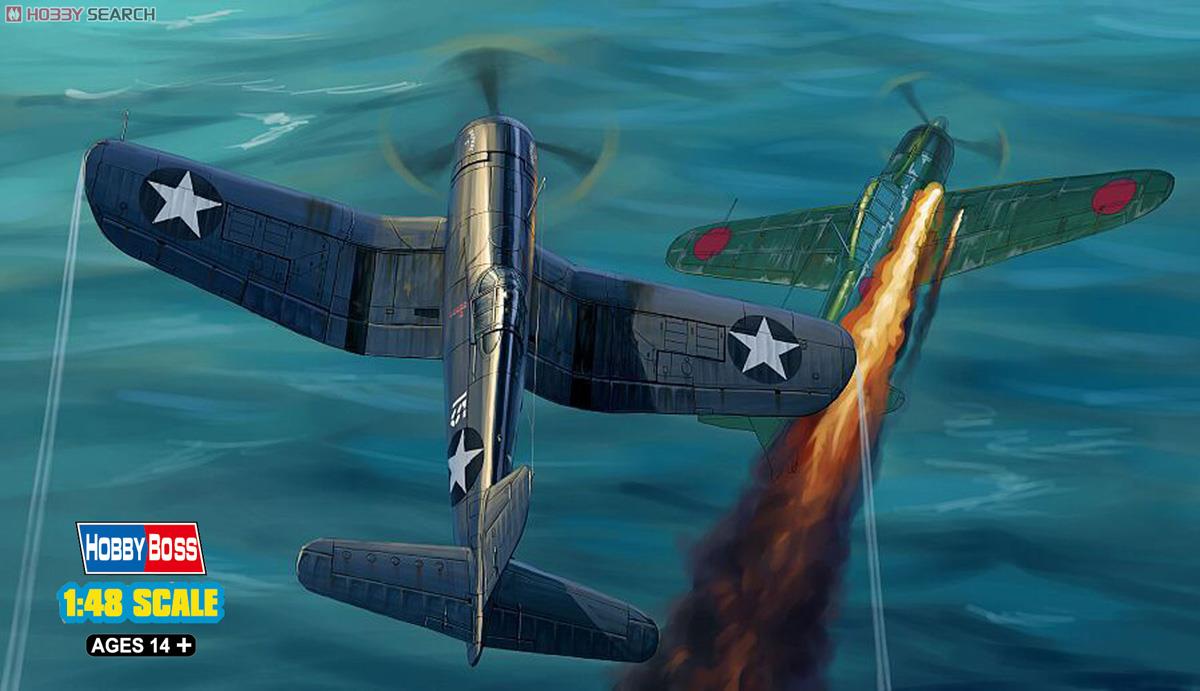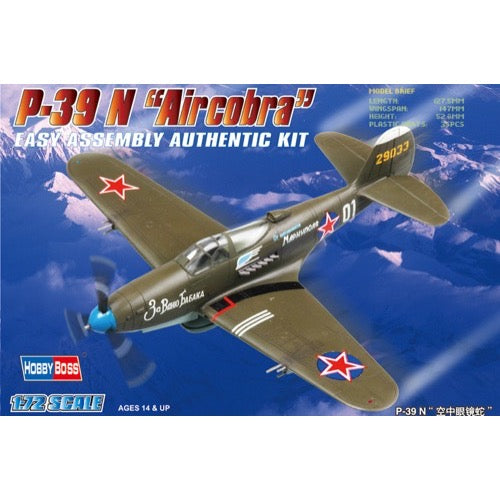
Roden 628 1/32 Cessna Type 337 Lynx Rhodesian War
39.00
$
<p>The Lynx was a lightweight twin plane based on Cessna's Type 337 private aircraft. Two engines are mounted before and after the fuselage, and the tail is supported by two booms. Used by southern Rhodesia, the Lynx was armed with machine guns, napalm bullets and rockets, and was used with great success as a ground attack machine. This kit includes a gunpod-mstyle machine gun on the cockpit, with the rockets and napalm bullets mounted on the underside of the wing.</p>
<h3>Specification</h3>
<ul>
<li>Dimensions: 400x270x65 mm (15.7x10.6x2.6 inch)</li>
<li>Weight: 600 g (1.32 lbs)</li>
</ul>
<h3>Includes</h3>
<ul>
<li>Decals for 3 versions</li>
</ul>
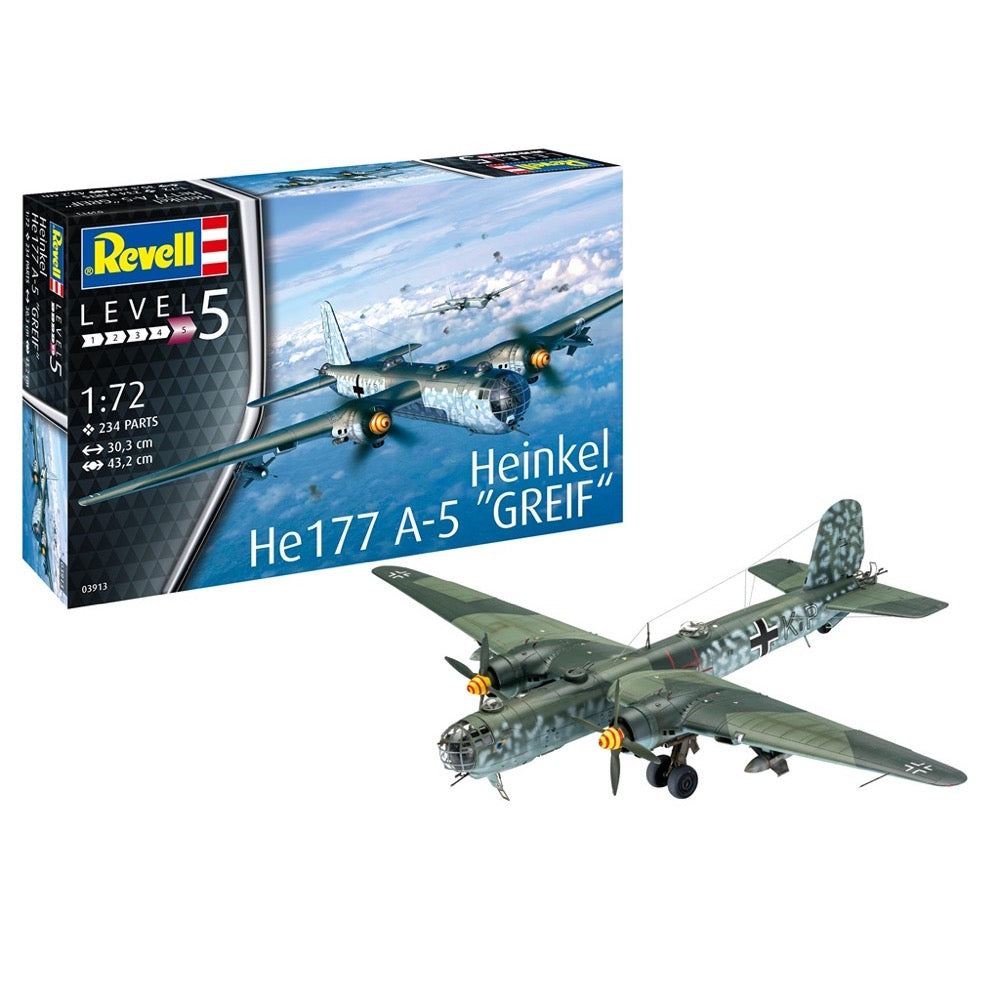
Revell 03913 1/72 Heinkel He-177A-5 Grief
35.00
$
<p>Model of the He177 A-5. It was the Luftwaffe's only four-engined bomber, delivered from March 1942. The paired arrangement of the engines often caused problems. It was also equipped with the Fritz X guided glide bomb.</p>
<ul>
<li>
<p>Detailed cockpit</p>
</li>
<li>
<p>Cockpit floor pan with MGs</p>
</li>
<li>
<p>Detailed periscope tower</p>
</li>
<li>
<p>Rotating twin MG turret</p>
</li>
<li>
<p>rear defense stand</p>
</li>
<li>
<p>Detailed bomb bay</p>
</li>
<li>
<p>2 SC 500 bombs</p>
</li>
<li>
<p>Detailed undercarriage</p>
</li>
<li>
<p>Movable propellers</p>
</li>
<li>
<p>3 Fritz X guided bombs</p>
</li>
<li>
<p>Decal with 2 versions of the Luftwaffe</p>
</li>
</ul>
<h3>Authentic representation of the following versions</h3>
<ul>
<li>
<p>Heinkel He 177 A-5, F8+KP, 6./KG 40, Bordeaux-Merignac, France, June 1944</p>
</li>
<li>
<p>Heinkel He 177 A-5, serial number 550131, 6N-DN, 5./KG 100, Aalborg 1944</p>
</li>
</ul>
<h3>Specifications</h3>
<ul>
<li>
<p>Age recommendation:13+</p>
</li>
<li>
<p>Number of parts:234</p>
</li>
<li>
<p>Length:303mm</p>
</li>
<li>
<p>Height:80mm</p>
</li>
<li>
<p>Span:432mm</p>
</li>
</ul>
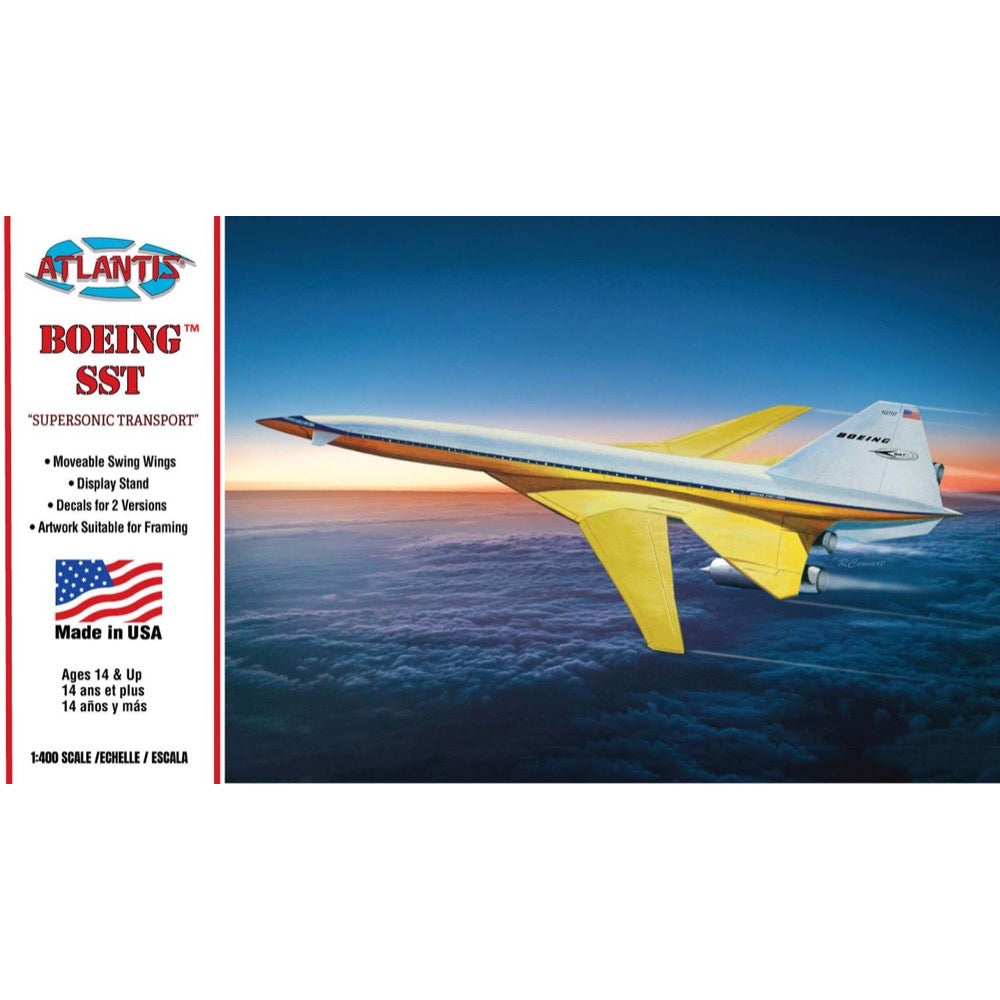
Atlantis Models 6815 1/400 Boeing SST Supersonic Transport
18.00
$
<h3>The Boeing 2707 was an American supersonic passenger airliner project during the 1960s. </h3>
<p>Boeing won a competition for a government-funded contract to build an American supersonic airliner. The design emerged as a large aircraft with seating for 250 to 300 passengers and cruise speeds of approximately Mach 3. It was intended to be much larger and faster than competing supersonic transport (SST) designs such as the Concorde.</p>
<p>The entire SST concept was the subject of considerable negative press, centered on the issue of sonic booms and effects on the ozone layer. A key design feature of the 2707 was its use of a swing wing configuration. Rising costs and the lack of a clear market led to its cancellation in 1971 before the prototypes had been completed.</p>
<h3>Features</h3>
<ul>
<li>This kit comes molded in white with decals for Boeing 2707-200 and Pan American.</li>
<li>Measures 9.50 inches long with display stand. <br>
</li>
<li>Officially Licensed with Boeing.</li>
</ul>
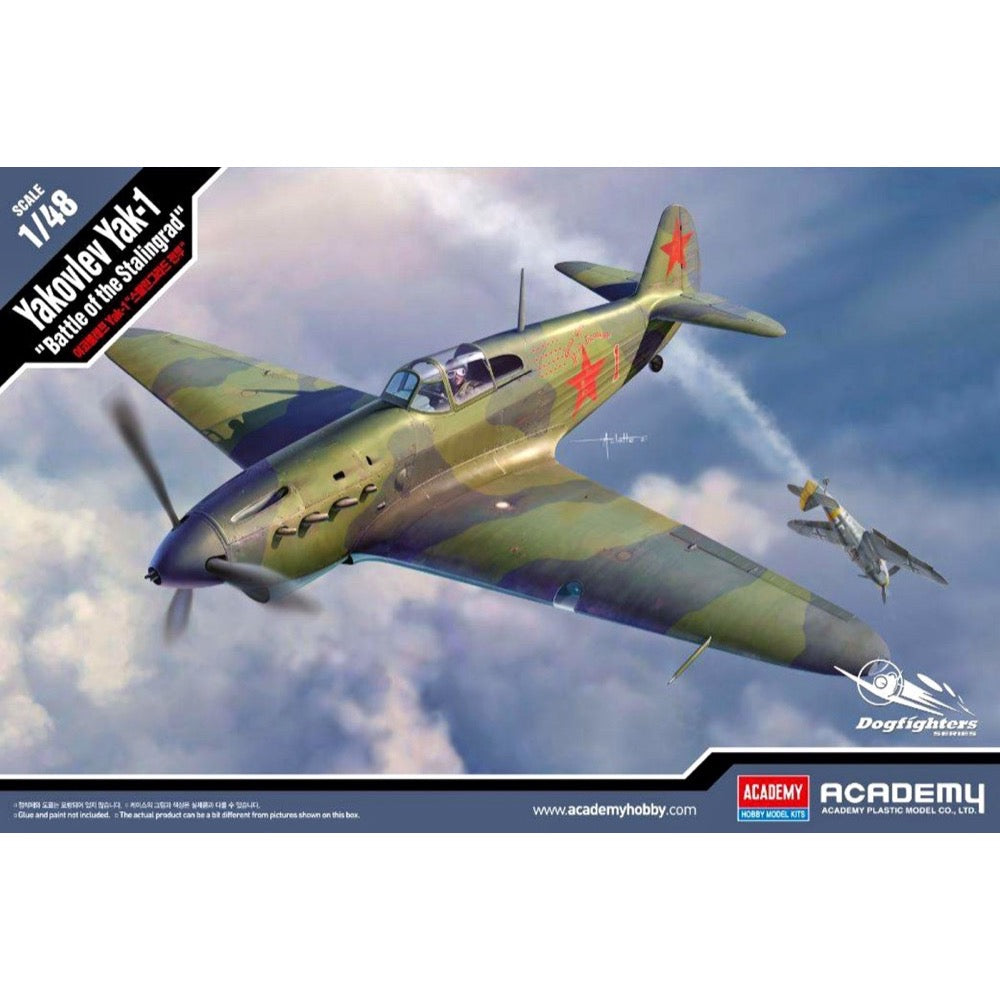
Academy 12343 1/48 Yakovlev Yak-1 "Battle of Stalingrad"
19.00
$
<h3>The Yak-1 was a fighter aircraft that was active in the Soviet Air Force.</h3>
<p>This model kit from Academy features precisely molded panel lines; the plane can be assembled with ski-type landing gear for winter specifications. Canopy masking stickers are included, as are decals for five Soviet Air Force and German Air Force versions, centering on aircraft flown by aces.</p>
<h3>Features</h3>
<ul>
<li>17.5cm long, 20.8cm wingspan when completed<br>
</li>
<li>Includes canopy masking stickers and decals for 5 versions</li>
</ul>
<h3>Markings for 6 aircraft</h3>
<ul>
<li>Lt Mikhail Dmitrievich Baranov, 183rd IAP, Stalingrad Front, Autumn 1942.</li>
<li>Lt Lydia Litvjak, history's first female fighter ace, 296th AIP, Stalingrad, Spring 1943.</li>
<li>Capt B. N. Eremin, 296th AIP, Brigadirovka airfield, Ukraine, Winter 1r 6 aircraft941-42.</li>
<li>Maj Fedor Ivanovich Shinkarenko, 42nd IAP, Winter 1942.</li>
<li>1st Lt S. M. Reshetov, 273rd IAP, 268th IAD, Summer 1942.</li>
<li>Captured by Luftwaffe 1942.</li>
</ul>
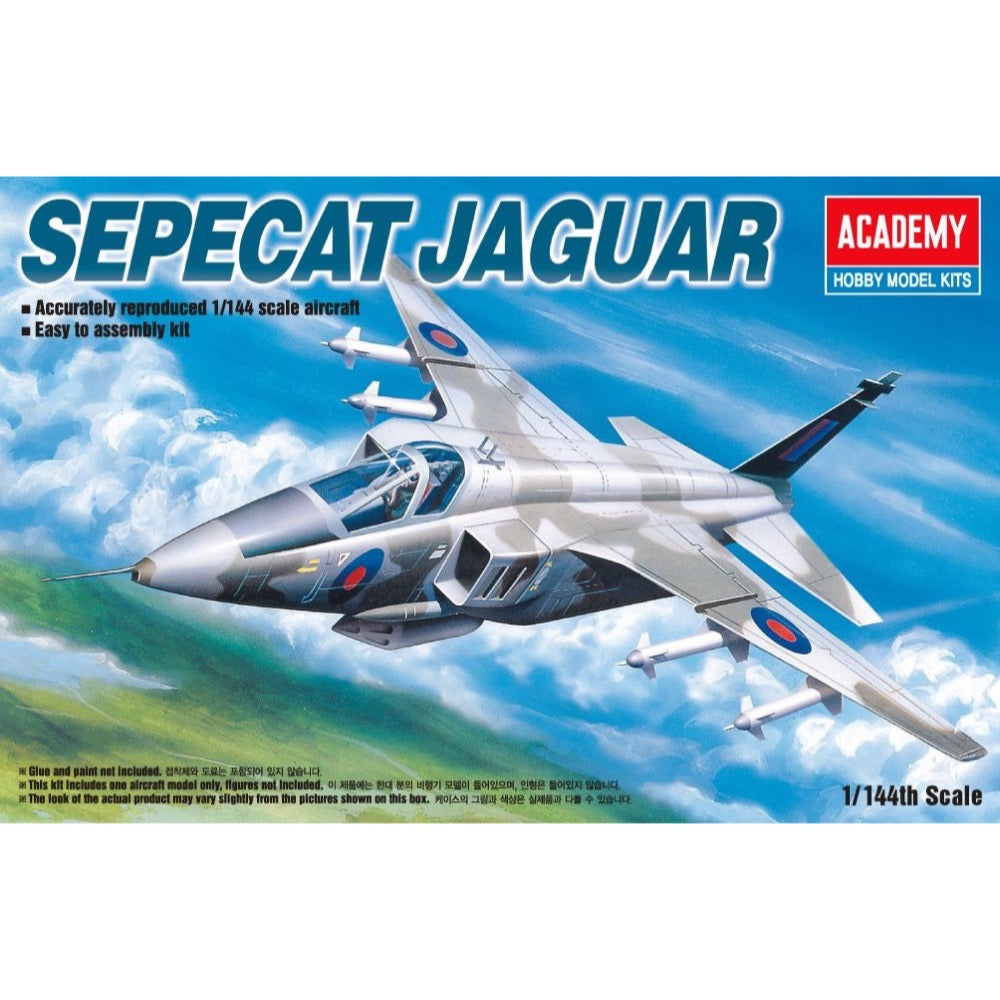
Academy 12606 1/144 Sepecat Jaguar
4.00
$
<p>Jaguar is the result of an Anglo-French joint venture established in 1965 to build an advanced training - attack aircraft. The RAF initially planned to use it only for school purposes, but in later years it was also intended for assault tasks. In the early 1960s, the French Air Force was looking for a new aircraft to replace the long-serving T-33 and Fouga Magister training planes and the Mystere IV attack aircraft. In April 1964, the design of a new structure, initially named ECAT, began. The Br 121 project by Breguet went to the next stage. It was then that the RAF became interested in the program, as it needed a training plane with similar characteristics. On May 17, 1965, an agreement on joint production was signed between France (Breguet) and Great Britain (British Aerospace). The resulting joint venture was named SEPECAT. The first prototype took off from the ground on September 8, 1968. Co-operation problems caused delays, which resulted in a delay in entering service. The first units began to be introduced in 1972. The training aircraft program was converted into an attack aircraft. The English and French versions differ in a few minor elements, mainly minor elements of the production equipment of a given country. 573 machines were built. 403 for England / France, 54 for Oman / Ecuador / Nigeria, 116 for India (70 produced under license). The Jaguar is armed with two fixed 30mm ADEN single-barreled cannons on the underside of the hull. On four under-wing pylons, one under-fuselage, it can carry: cluster bombs (Belouga, BL.755); classic bombs (EU3, 454 kg); delayed fall bombs; bombs to destroy runways (Durandal, BAP.100); laser guided bombs (GBU-10A, BGL.400); air / ground rockets; Sea Eagle guided anti-ship; anti-radar ARMAT or ALARM (air / ground AS-30L); unguided air / ground rockets; nuclear bombs AN52. In addition to self-defense, the Jaguar can be armed with air-to-air AIM-9 Sidewinder or Matra R.550 Magic missiles or jamming pods on two pylons above the wing. The Jaguar's hull is elongated with a large oblique tail. Intakes for two rectangular jet engines. Wings in a high wing configuration. Two-wheel undercarriage assemblies. Technical data (SEPECAT Jaguar A version): length: 16.83 m, wingspan: 8.68 m, height: 4.89 m, maximum speed: 1700 km / h, speed of climb: 101.6 m / s, maximum range: 3524 km, ceiling maximum 14000m.</p>
<p>This is an injection-plastic jet aircraft model kit.</p>


